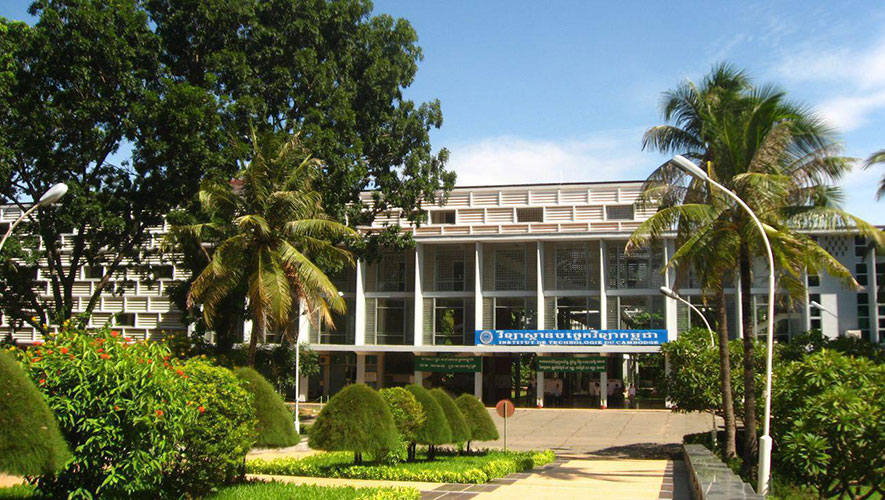A combined effort to jump-start the Kingdom’s vocational education programs might be too little too late
For the latest Cambodian Business news, visit Khmer Times Business
To say that the government has closed the door after the horse has bolted would be an understatement in relation to the urgency of Cambodia’s skills gap.
This comes after decades of warnings, initiatives, and development loans focused on the issue but still Cambodia gallops towards the cliff face.
At present, Cambodia is ill-prepared to meet targets set out by the Industrial Development Policy (IDP) that aims to hoist the nation, baggage and all, up the value chain.
Certainly, progress has been made. Phnom Penh in particular, is not the city it was five years ago, let alone two decades ago.
Introducing both the National Employment Policy 2015-2025 (NEP) and the National Technical Vocational Education and Training Policy (NTVET) 2017-2025, Heng Sour, spokesperson for the Ministry of Labour and Vocational Training, points out that “Cambodia has placed human capital development at the centre of our agenda by adopting socio-economic policies to cope with the transformative changes led by mega-trends to equip our labour force with skills of the future.”
Sour was keen to emphasise that the ministry’s 2019 Strategic Development Plan, which aims to strengthen Technical and Vocational Education and Training (TVET) quality, its support to socio-economic development, as well as promoting public-private partnerships, good governance as well as research and development. Whether enough has been done will soon become apparent.
A lack of urgency?
As the EU looks set to end Cambodia’s Everything But Arms (EBA) status, possibly ahead of the 2020 schedule, the need for diversification of revenue is now very real.
Dark, Trump-shaped clouds are gathering over the US. Jingoistic protectionism, a trade war, and two pieces of legislation posing threats to Cambodia’s development – the Cambodia Accountability and Return on Investment Act (CARI Act), and the Cambodian Trade Act (CTA), which is under proposal, threaten to hit the Kingdom where it hurts.
So there is a risk that Cambodia will lose both EBA and America’s Generalised System of Preferences (GSP) – delivering punishing blows to one of the top performing economic sectors. Throw into the mix the slower than expected growth in China, and suddenly, Cambodia’s rosy seven percent average year on year growth begins to looks fragile.
Of course, the government has been aware of this for some time and plans are afoot to remedy it, Sour tells Capital Cambodia.
“The IDP has set specific targets to increase the share of the industry sector in GDP through increased growth of the manufacturing sector (20 percent by 2025). The government aims to develop a comprehensive, long-term, multi-sector policy framework to guide industrial development, employment generation, and skills development.”
But with so many players involved and so much money being poured into this red hot issue, is a lack of coordination preventing the government from meeting its own targets?
Beneficiaries of development debt
Earlier this year, ADB shelled out a loan of $60 million to bolster TVET initiatives in Cambodia. The Cambodian government will utilise the $60 million loan to invest in five Technical Training Institutes (TTIs) across the country, upgrading their facilities and updating their curriculums. The stated goal is to produce some 18,000 highly skilled technicians in four high-growth sectors; manufacturing, construction, electricity and electronics.
One such TTI set to benefit is the Institute of Technology of Cambodia (ITC), chosen on account of its longstanding production of graduates fit for high-priority sectors, according to Dr Po Kimtho, deputy director-general of ITC.
“We have worked a lot with various donor agencies, but most of the support was focused on engineering programs, postgraduate degree programs, and research activities. Through these collaborations and the assistance from government budget, many laboratories in various skills have been upgraded,” says Kimtho.
Citing a need for more staff, more infrastructure, more equipment and more students interested in TVET courses, Kimtho hopes the ADB loan will address these issues, but also expressed a desire for “more frequent dialogue between the private sector, training institutions, relevant stakeholders in order to identify the gaps between demand and supply of labour” as well as “more accurate information on labour demand projection.”
If these issues are addressed, it is hoped Cambodia’s vocational educators will be able to further diversify the workforce, increase the number of higher value skilled workers, while posing limited risk to national debt, given the nature of the ADB loan.

Is debt the way to develop?
“I can think of several other loan-based projects that would be not as beneficial for the country,” says Eric Mousset, a long-serving development consultant who has worked with the government, the private sector and civil societies for over 12 years.
Recognising that development aid is not always truly free of geo-politics, Eric asserts that ADB works “properly.”
“By properly I mean the funds end up serving the intended purpose and also they [ADB] communicate clearly about their strategic line — see for example, the ADB Strategy 2030 document that is public domain and easily accessible. We know where we stand with them, so getting indebted with ADB isn’t a bad choice.”
The government contends that such debt is manageable, as set out by the recent development budget that was approved by the National Assembly this month. CPP lawmaker Mok Mareth was quoted by Khmer Times as saying “Even if someone accuses us of falling under heavy foreign debt – to which our Economic and Finance Ministry has also responded – we can manage it, and it was recognised internationally.”
Of those most affected by Cambodia’s skills gap, the private sector – in particular foreign companies operating here – can ill afford to wait for others to enact change, and often take things into their own hands.
Mengheng Lim has worked for German-owned GBC Engineers for two and a half years. Of that time, he has spent six months in Ho Chi Minh City, training with German engineers at the company’s expense.
“There’s no certificate, no formal qualification, it’s just learning from the German engineers, they train us to do the things we don’t know how to,” Mengheng explains.
He goes on to say that GBC routinely sends employees to Berlin, where the company is headquartered, and to their Ho Chi Minh City office, often for two month stints that aim to develop engineers into a workforce ready for the modern needs of the market and they are not alone in this.
“This environment is paved with successful initiatives by the private sector or by the development partners,” notes Eric as he explains the role the private sector plays.
Limitations to the private sector
By contrast though, Yumiko Yamakawa of the ADB, makes it clear that the private sector’s capacity to affect change in this area has limitations.
“Most small and medium-sized enterprises do not have the capacity to provide any training to their employees. Large employers, mostly foreign firms in special economic zones, invest in some in-house, on-the-job training, but without any linkages with TTIs. While some TTIs have entered into partnerships with industry, there is no system to expand work-based continuous learning opportunities for upskilling current workers.”
This, she argues, can place grim restraints on the prospects of those most marginalised by a rapidly changing economy.
“Formal training opportunities are limited to only those who possess at least lower secondary education graduation certificates. Thus, many current workers are trapped in low-wage and low-skill jobs. ADB’s project will help address these constraints by recognising prior experience and competency of workers in any vocational training program.
”With all eyes on Cambodia as it takes the steps necessary to reach higher-middle income status by 2030, most agree that more needs to be done to develop skills, a task that Eric believes “is so ample that there is only so much that they [the government] can achieve by themselves.”
It is for this reason that cooperation between the Royal Government of Cambodia, development agencies, and the business community is so vital and further underscores the need for a coordinated approach to multilateral problem-solving.
It is, by most accounts, working though
“This country is transitioning from the Least Developed Countries UN category to the larger category of middle-income economies, and indeed it is catching up at a fast pace,” Eric reassures me.
He is keen to note that, in the past, the willingness to cooperate between ministries has not always been obvious. “Even if the current legal and regulatory environment might appear to some of the new market entrants as presenting challenging gaps, it has improved tremendously over the last decade, that has to be said to the credit of the government in place.”
Banking on Cambodian workers
Sour explains the 2019 budget for his ministry is around $58.48 million, with $41.83 million earmarked for national spending and subnational around $16.63 million.
He goes on to explain that the Technical Vocational Education and Training Skills Development Project (TVETSDP 2015-2021) has taken out a total of $42.26 million in loans, with that figure broken down as $23 million from the ADB, $15 million from AFD and the government providing $4.26 million.
This most recent loan from ADB and AFD is yet to be added to the budget, but is expected to be signed later this year, according a representative of AFD familiar with the loan.
“The project will also strengthen the industry’s roles and engagement in skills development, focusing on upskilling and reskilling of the existing workers. Partnership agreements will be forged with industry and TTIs to promote work-based learning (WBL) programs and expand the pilot Skills Development Fund (SDF) as an innovative TVET financing mechanism,” says AFD.
The ADB loan will be met with contributions from AFD and the government, totalling $88.23 million, with ADB contributing $60 million (68 percent), and both AFD and Cambodia contributing $19.92 million (23 percent) and $8.31 million (nine percent), respectively.
ADB’s lending is on concessional terms, for a term of 32 years including a grace period of eight years, with the project being implemented for five years from 2019 to 2024, says Yumiko of ADB.
There is a limit to how far this money will go, but ADB’s most recent loan of $60 million will certainly give the ministry a head start on meeting targets set by the IDP, but will all these actors spoil the play?
It is up to the National Training Board to successfully juggle the input of these different interests and ensure that dialogue between government, educators, students, businesses and development partners is coherent, and the clock is ticking.




